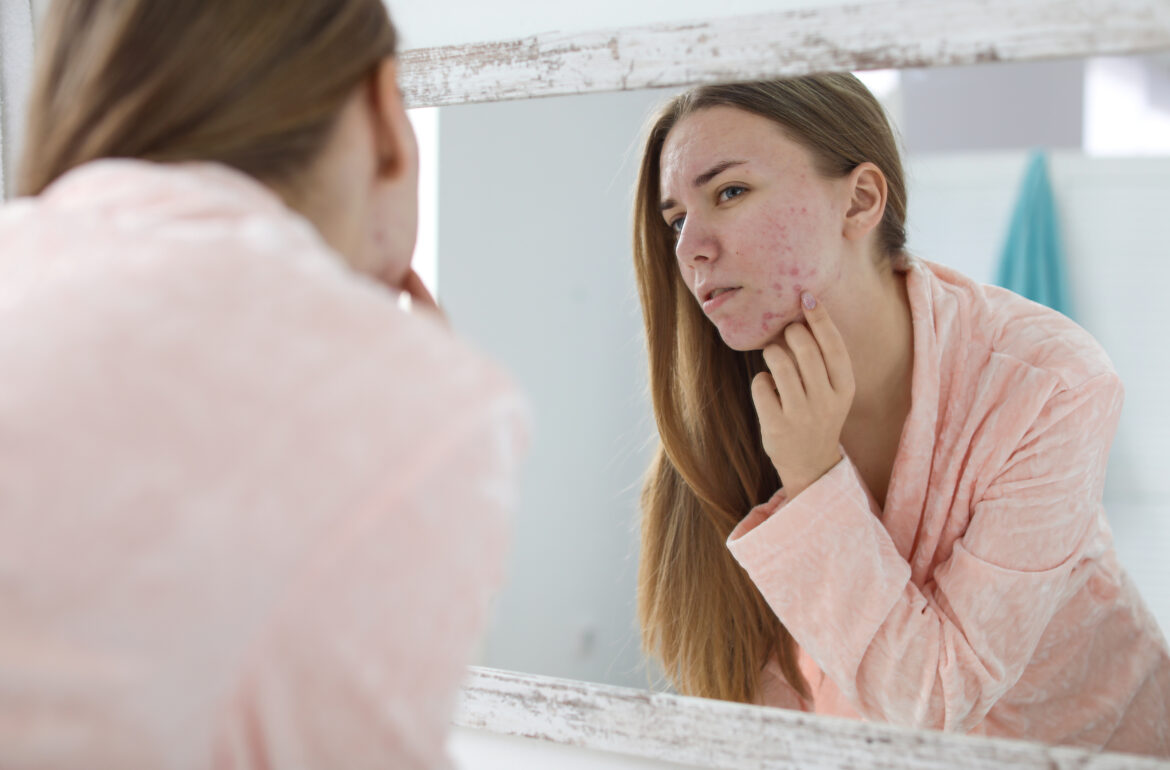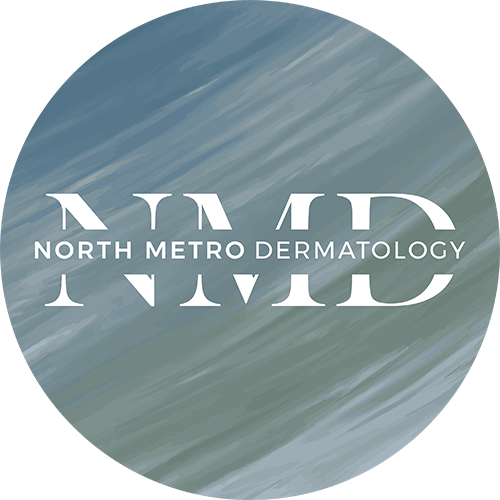ACNE AWARENESS MONTH

Acne. Ugh. While it’s a very common skin problem, it’s not a surface-level one. Acne can cause significant distress, and its effects can even contribute to anxiety. But the good news is, it’s not an unbeatable foe! June is National Acne Awareness Month, so let’s arm you with some knowledge to persevere and ultimately prevail against this annoying condition!
The first thing to know about acne is that its cause is complicated. There are often many things contributing to acne-prone skin: family history/genetics, hormonal changes, and outside factors like certain beauty products, diets high in sugar and processed foods, and increased stress levels. All of these factors can contribute to the following changes on the skin:
1) Clogged Hair Follicles
Skin cells and sebum (an oily substance our body naturally makes to lubricate the hair and skin) combine in the hair follicle and create a plug in the follicle
2) More sebum production
Sebaceous glands (the glands that make sebum) are found all over the face, neck, chest, upper back, and arms. These glands enlarge in our teens, and the bigger the sebaceous glands, the more sebum they produce.
3) More bacteria
With an increase of sebum production, bacteria that normally lives on the skin thrives to the point of overgrowth.
4) Inflammation
All the changes occurring in the hair follicles and sebaceous glands can cause inflammation, and that can lead to rupture of hair follicles, which ends up causing red and tender bumps.
TAILORED TREATMENT
One tricky thing about acne is that while it is common, its treatment really needs to be tailored to the person and to what we suspect to be the main underlying cause. So let’s dive a little deeper into what those may be…
Comedonal acne:
These are what we call “whiteheads” and “blackheads.” These occur when pores become clogged with dead skin cells and sebum, and they give the skin a bumpy texture. This kind of acne is extremely common and often responds well to topical over-the-counter treatments like salicylic acid, benzoyl peroxide, and adapalene. However, sometimes comedonal acne can be stubborn and require prescription-strength topical or oral medication.
Inflammatory acne:
Increased sebum, clogged pores, and overgrowth of skin bacteria can all contribute to inflammatory lesions, where the acne can have a pink-to-red appearance and/or have pus-filled bumps. Inflammatory acne can respond well to topical over-the-counter treatments like salicylic acid or benzoyl peroxide, or to natural ingredients like sulfur or tea-tree oil. If inflammatory acne is not managed well with these types of treatment options, then prescription-strength topical or oral medications are often the next step.
Nodular acne:
Nodular acne (also sometimes called nodulocystic acne) can feel like firm, tender balls underneath the skin surface. Sometimes there may be overlying redness, but these bumps never come to the surface or pop. In fact, if you were tempted to squeeze one of these bumps, it would only make it feel more painful, look more inflamed, and last even longer. Even without being manipulated, these acne bumps can take weeks to resolve and can often leave behind marks. Unfortunately, nodular acne doesn’t respond to most over-the-counter medications or topical treatments. However, there are multiple prescription-strength oral medications that can be very helpful for this condition. For that reason, if you are experiencing nodular acne, it’s best to schedule an appointment with a dermatology clinician to assess which prescription-strength treatments can benefit your skin. And if you’re looking for very rapid relief or have an upcoming event, a dermatology clinician can inject Kenalog (a dilute steroid) directly into these acne lesions, which helps reduce swelling and pain in as little as 24 hours!
Hormonal acne:
As we mentioned before, acne is often very closely tied to our hormones. In our teens, our sebaceous glands enlarge and produce more sebum, which often causes acne in our growing years. However, hormonal acne is also unfortunately very common in adults. Particularly for women, changes throughout the month related to the menstrual cycle, pregnancy, and menopause can all aggravate acne. Hormonal acne can take many forms as far as appearance, including blackheads, whiteheads, pimples, pustules, and nodular cysts. In females, hormonal acne is often suspected when acne is predictably flaring at a particular time of the month. Some will notice acne worsening just before or during their period, while others will correlate it more around the time of ovulation. If you suspect you have hormonal breakouts you’re struggling to manage with over-the-counter options, there are prescription-strength topical and oral medications available that are specifically targeted toward hormonal acne. Schedule an appointment with a dermatology provider to discuss your options.
Fungal acne:
TikTok has shown more of a spotlight on this type of less common acne. “Fungal acne” refers to a condition called malassezia ( pityrosporum) folliculitis, in which there is an overgrowth of the natural yeast of the skin. This kind of acne will look like a bunch of similar-looking bumps involving hair follicles and it will be itchy. Fungal acne is not as common as regular acne, but it can happen with people that experience one or more of the following: increased sebum production (which ultimately results in really oily skin), increased sweating, living in a hot and humid climate, recent topical and/or oral antibiotic use, topical and/or oral steroid use, or a suppressed immune system. Fungal acne responds better to certain topical or oral anti-inflammatory medications and antifungals rather than the usual acne medications. If you suspect you have fungal acne, start out by using an over-the-counter anti-dandruff shampoo with an active ingredient like pyrithione zinc, selenium sulfide, ketoconazole, or salicylic acid as your face wash. Try to avoid sweaty and humid situations, washing off after rigorous activities or a muggy day. Ultimately, this kind of acne can be very stubborn, and certain rashes with different causes can look a lot like it- so if you are still struggling with suspected fungal acne, it’s best to check in with a dermatology clinician to get a formal assessment.


